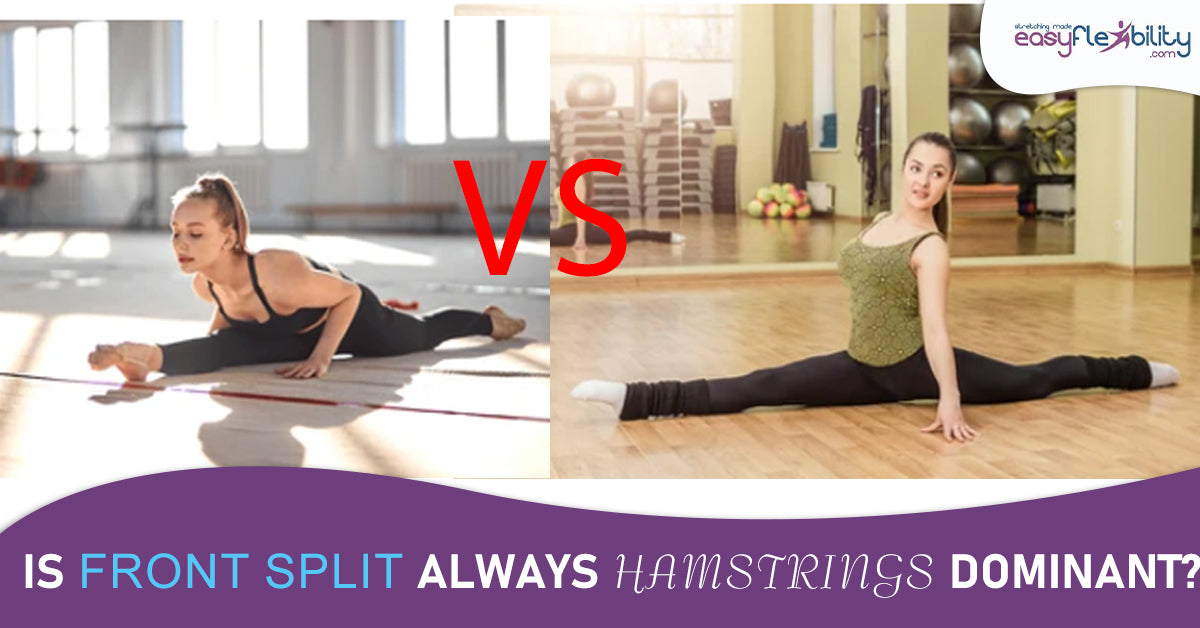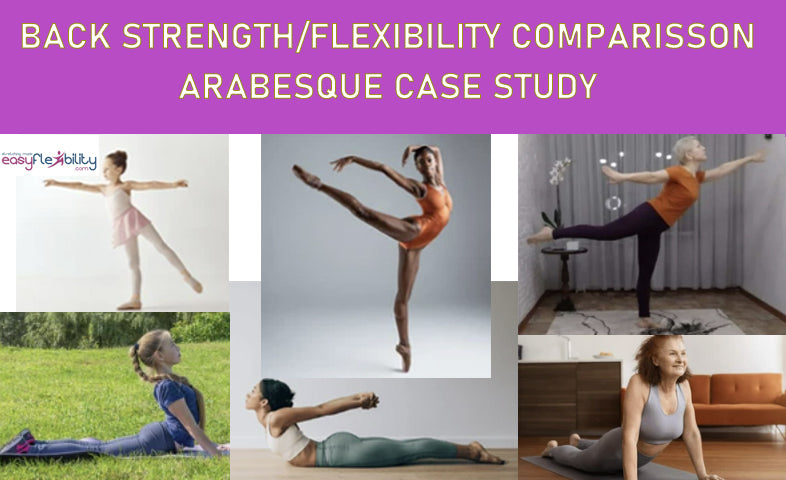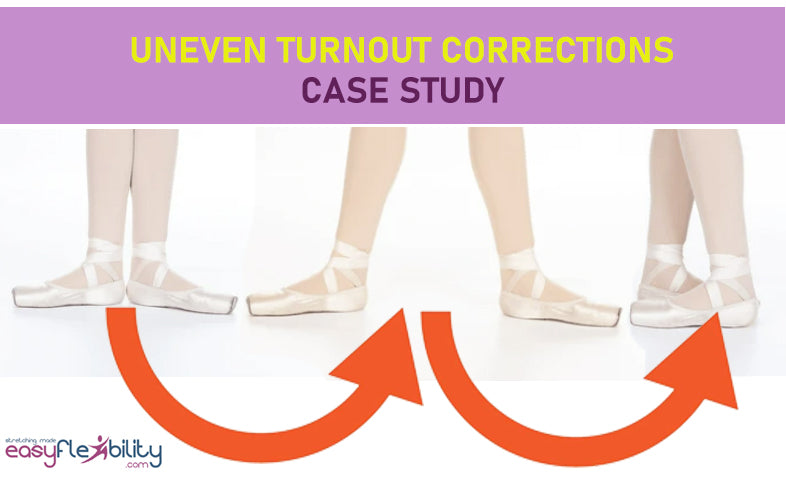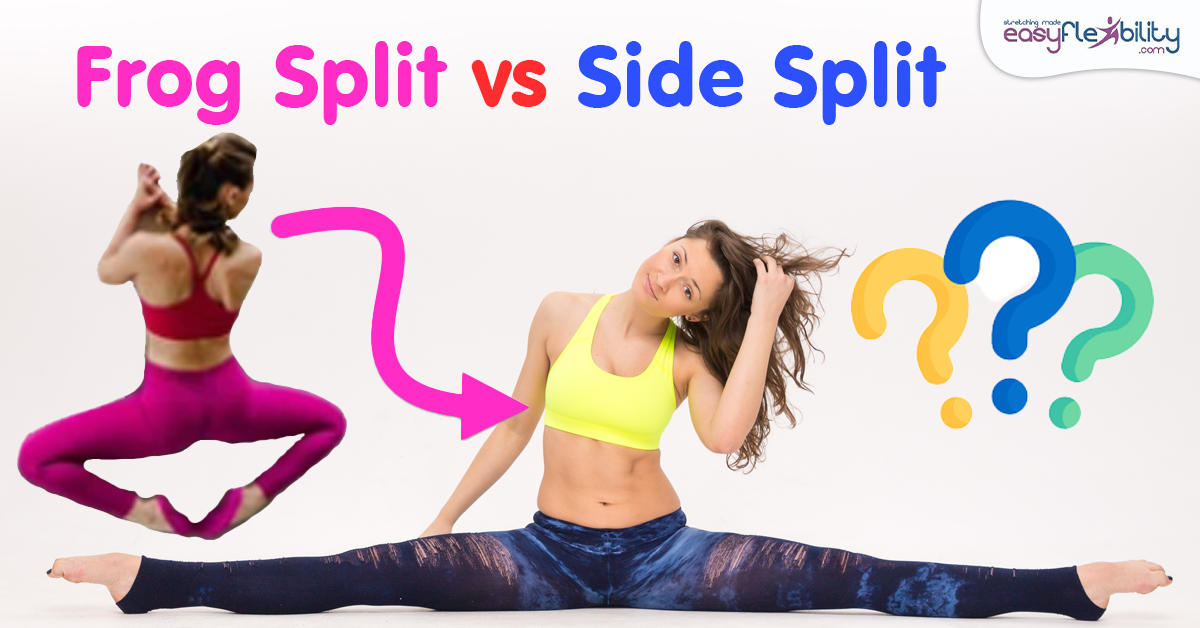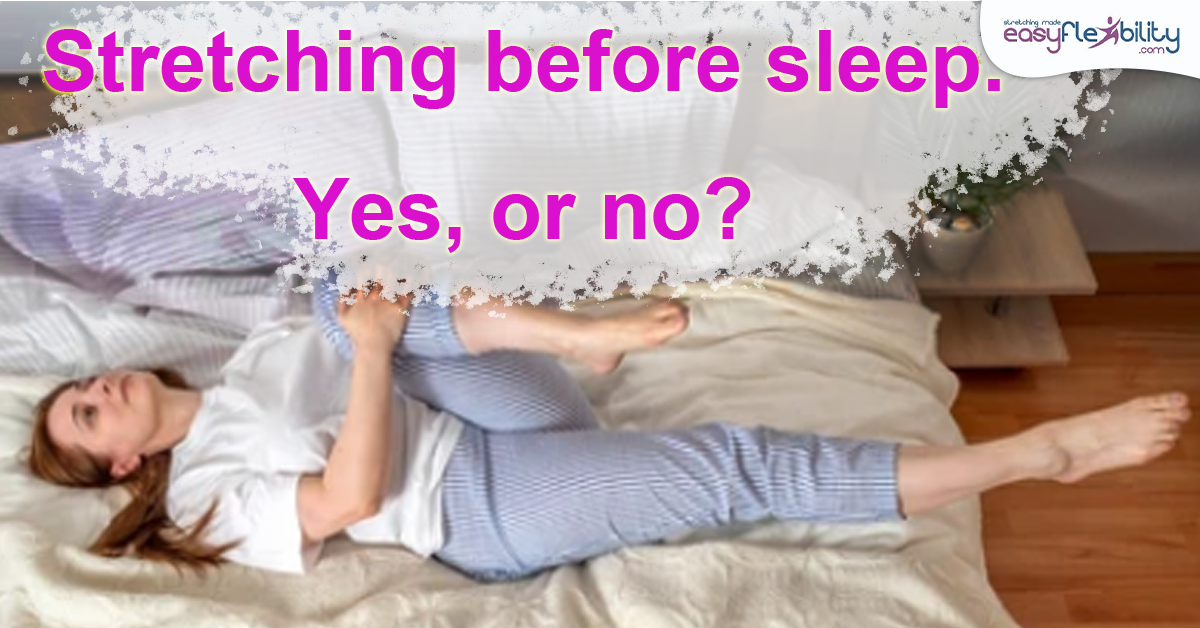Exactly how much back flexibility do you need to do a perfect Arabesque?
Posted by Paul Zaichik on

It is easy to calculate the minimum back extension or back hyperextension flexibility that is needed.
It is easy to calculate the minimum back extension or back hyperextension flexibility that is needed. First thing you would need to do is test your active hip extension flexibility. Hip extension combined with a turn out unless you are doing a parallel Arabesque.
it is particularly important to calculate active flexibility because active flexibility is always less than passive flexibility. In other words, if someone were to take your leg when you were lying in prone position, or face down, and lift it up into the Arabesque position without your spine moving, the leg would come up higher than if you would try to hold it yourself.

Scroll down to try a special FREE exercise below which will improve your Arabesque & Attitude Derriere in minutes!
There are exercises called antagonist short range conditioning exercises which we use in our Arabesque program which will help you to minimize the difference between active and passive flexibility bringing your active flexibility closer to a passive flexibility.
Let's assume that your passive flexibility is 30 degrees, and your active flexibility is 20 degrees so to do a 90-degree Arabesque, or leg parallel to the floor, you would need 70 degrees from your back, and this is 70 degrees of active flexibility not passive. Again, comparing the active and passive flexibility you might lie down on the floor and do a cobra where your torso is completely vertical, however, if you let go and take your hands off the floor, your torso will come down closer to the floor, showing that your passive flexibility is less.

To do an Arabesque with completely vertical torso and horizontal working leg you need 70 degrees of active flexibility. You can test your active flexibility by someone holding your legs down or you might be able to do it without somebody holding your legs down depending on the ratio of your torso to leg length. From there you would come up as high as you can and measure that angle. You can use our free Stretch180
app to measure all the angles. It’s simple to use, you just take a picture, and the app will show you the angle.
app to measure all the angles. It’s simple to use, you just take a picture, and the app will show you the angle.
Download this app onto your device:
Scroll down to try a special FREE exercise below which will improve your Arabesque & Attitude Derriere in minutes!
For 70 degrees active flexibility a person may need between 100 and 120 degrees of passive flexibility and a very trained person might need only about 85 to 90 degrees of passive flexibility for 70 degrees of active flexibility. A person who is very well trained in antagonist short range condition exercises will have a much smaller discrepancy between active and passive flexibility. You can learn all these techniques in our Arabesque & Attitude Derriere Strength & Flexibility Online Training Program or in our Easy Arabesque & Attitude Derriere Online Certification Training Seminar.
Here is how you can measure your level of Active Flexibility
· Lie down on the floor face down
· Without moving your spine lift your leg and hold it
· Find the angle, you can use our Stretch180 app to measure your angle
· Once you know the angle you can test your passive flexibility and active flexibility and see what that angle is, at the two angles.
Once you have this information you will see how much more range you need from your back, or perhaps you can get some of that range
from your hips as well. The more range you will get from your hips, the less range you will need from your back and vise-versa.
from your hips as well. The more range you will get from your hips, the less range you will need from your back and vise-versa.
Want to improve your Arabesque Instantly? Try this Zaichik Stretching Technique called ~Discernment~
SIGN UP BELOW TO GET 2 MORE PROGRESSIONS OF THIS EXERCISE FREE - TO HELP IMPROVE YOUR ARABESQUE!
Perform an Arabesque on both sides and remember the height of your leg. Take pictures if you like.
- Now do the ~Discernment~ ZST for 3 sets of 3 repetitions.
- Each repetition has two parts as demonstrated in the video.
- The first part is called the Leverage and the second part is called the Target.
- Come up to a cobra position as Leverage, contract your lower back and lift your hips slightly off the floor with a tailbone aiming toward the ceiling, as you drop the hips back down use your hands to press up higher.
- Do this 3 times pressing up a little bit higher each time.
- Do 3 sets of 3 repetitions resting for 10 to 30 seconds between each set.
When done try your Arabesque one more time on each side and see the difference!
This exercise has progressions to two more levels, Intermediate and Advanced. Sign up to get two more levels by email.



Attitude Derrière or Back Attitude and Arabesque are Ballet/Dance positions usually strength trained via bar assisted leg lifts into the technique. The flexibility is attained via relaxed stretches.

This program takes a different approach.The flexibility resistance to these elements comes from medial hip rotators, hip flexors of the lifted leg and flexors of the core. Posterior tilters of the pelvis also offer resistance through the standing leg.
Watch The Anatomical Muscle Animation of The Arabesque and The Attitude Derriere
Unlike the standard time consuming passive stretch method, this routine employs Kinesiological Stretching techniques. Each of the muscles that prevent the successful Attitude Derriere and Arabesque is separated out and quickly lengthened, using one of its own actions against the other. Because no action is held for long, the stretch reflex is avoided and results are seen right away.

Since in Arabesque and Back Attitude it's the opposite muscles that hold the pose to the one's being stretched, reciprocal inhibition techniques are intervened with kinesiological stretches to master the skill even faster. You'll be surprised how fast easy results come using this method.
Arabesque & Attitude Derriere Strength & Flexibility Training
4 STEPS FROM EASIEST TO ADVANCED
This Arabesque & Attitude Derriere program will help you to improve your Arabesque and Back Attitude, steadily, safely, painlessly and quickly with the use of the Proprietary Zaichik Stretching Techniques and Supporting Exercises.
© ElasticSteel Corp., EasyFlexibility, Paul Zaichik, et. El., 2022. No part of the materials available through ElasticSteel.com, EasyFlexiiblity.com, site may be copied, photocopied, reproduced, translated or reduced to any electronic medium or machine-readable form, in whole or in part, without prior written consent of Paul Zaichik EasyFlexibility.com, Elasticsteel.com.. Any other reproduction in any form without the permission of Paul Zaichik EasyFlexibility.com, Elasticsteel.com is prohibited. All materials contained on this site are protected by United States copyright law and may not be reproduced, distributed, transmitted, displayed, published or broadcast without the prior written permission of Paul Zaichik, EasyFlexibility.com, Elasticsteel.com.
Share this post
0 comment






